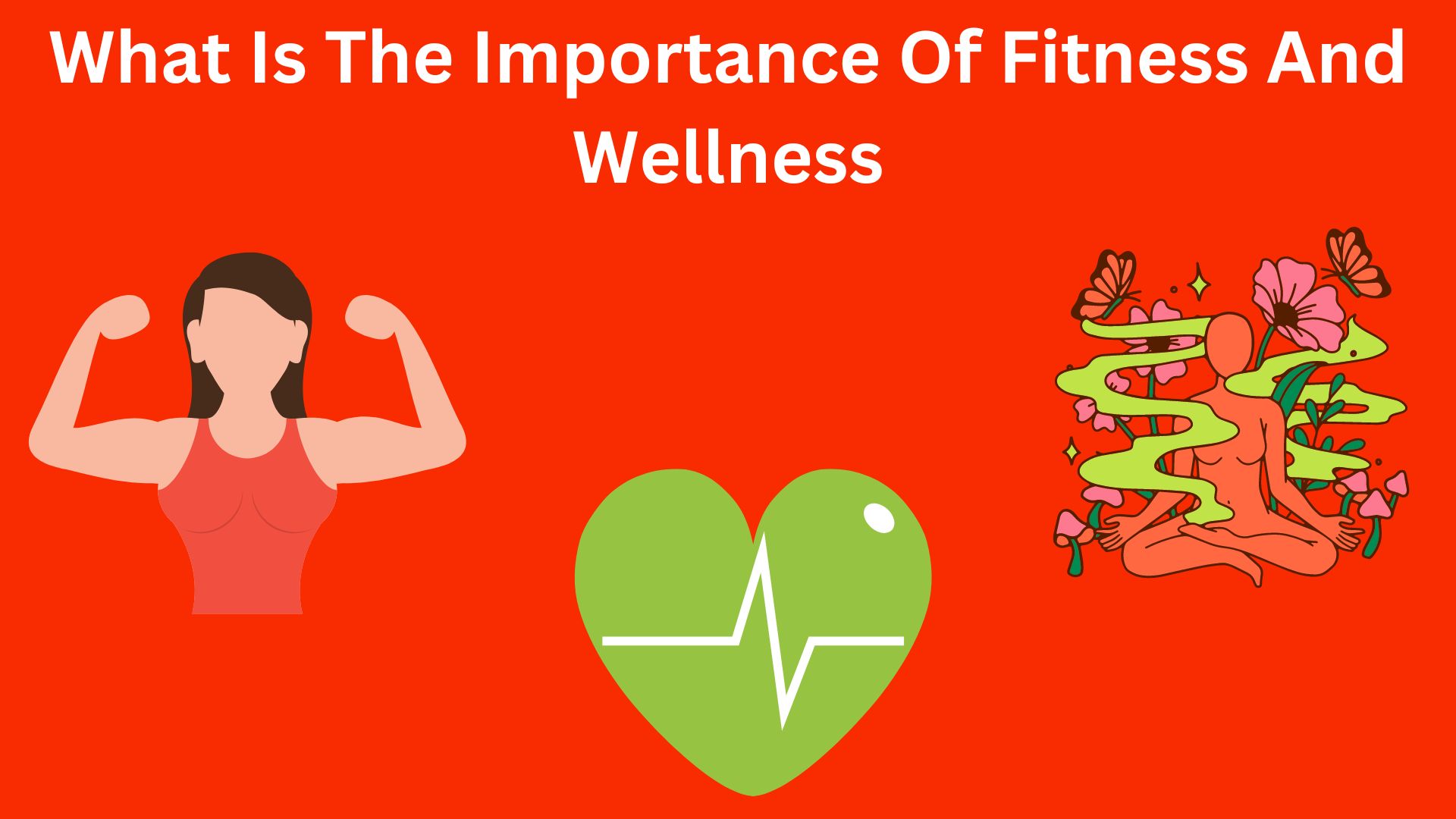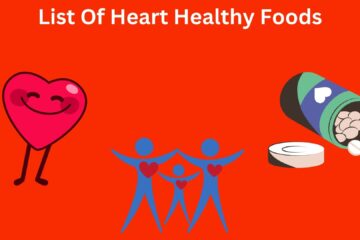Fitness and wellness are important aspects of living a healthy lifestyle. The ability to do physical tasks with strength, endurance, and flexibility is referred to as fitness, whereas wellness comprises overall physical, mental, and emotional well-being. Fitness and wellness are both essential for increasing one’s quality of life, preventing chronic diseases, and maintaining a healthy weight.
Fitness provides various physical benefits, including improved cardiovascular health, muscle and bone strength, and increased energy levels. Physical activity on a regular basis has also been demonstrated to lower the chance of developing chronic illnesses such as obesity, type 2 diabetes, and heart disease. Fitness can boost mental health and well-being in addition to physical health by lowering stress, enhancing mood, and promoting better sleep.
Wellness entails caring for the full individual, including their physical, mental, and emotional well-being. Achieving wellness frequently entails making lifestyle adjustments such as eating a good diet, getting adequate sleep, and managing stress. Wellness can enhance the overall quality of life, boost productivity, and lower the chance of developing chronic diseases.
In this article, we will look at the numerous benefits of exercise and well-being and how to implement these practices into your daily life. We’ll talk about how important it is to choose a physical activity that you enjoy, as well as the advantages of stress management strategies and healthy lifestyle practices. We will also offer advice on how to include fitness and well-being into your everyday routine and maintain a healthy balance.
Benefits Of Fitness And Wellness

1. Improves cardiovascular health
By enhancing heart and lung function, regular physical activity can assist to enhance cardiovascular health. It can also help lower blood pressure and cholesterol levels, lowering the risk of heart disease and stroke.
2. Strengthens muscles and bones
Exercise helps to strengthen muscles and bones, which can reduce the risk of osteoporosis and falls in older persons. Weight-bearing activities, such as walking or weight lifting, are very good for developing and maintaining strong bones.
3. Increases energy levels
Exercise can help to increase energy levels by improving blood flow and oxygen supply to the body. It can also boost energy output by improving the operation of the mitochondria, the cells’ energy-producing components.
4. Weight control
Regular physical activity will help you maintain a healthy weight and avoid obesity. Exercise causes calories to be burned, which can assist to avoid weight gain and encourage weight loss.
5. Reduces the risk of chronic diseases
Exercise has been demonstrated to lessen the chance of developing chronic disorders such as obesity, type 2 diabetes, and heart disease. It may also lower the risk of certain cancers, including breast and colon cancer.
6. Improves mental health and well-being
Exercise has been demonstrated to lower stress, increase mood, and promote better sleep, all of which can improve general mental health and well-being. It can also boost self-esteem while lowering the chances of anxiety and despair.
7. Improves cognitive function and productivity
Exercise has been demonstrated to boost cognitive function and productivity. It can boost concentration, memory, and problem-solving abilities, leading to improved performance at work or school.
8. Improves sleep quality and length
Regular physical exercise might assist enhance sleep quality and duration. Exercise can assist to relax both the mind and the body, making it easier to fall and remain asleep.
9. Increases social engagement
Exercise can increase social interaction, which can benefit mental health and well-being. It can be a terrific opportunity to meet new people, make new friends, and develop a feeling of community.
10. Promotes healthy aging
Exercise promotes healthy aging by helping to maintain physical and cognitive performance as we age. It can assist to prevent age-related muscle mass, strength, and balance decreases, as well as lower the risk of cognitive decline and dementia.
How To Incorporate Fitness And Wellness Into Daily Routine

1. Find a physical activity that you enjoy
Finding a physical activity that you enjoy will increase the likelihood that you will stick with it. This could be as simple as going for a stroll or as complex as joining a gym.
2. Set attainable goals
Setting attainable goals might help you stay motivated and on track. Consider creating both short-term and long-term goals, such as working out a particular number of times per week and training for a race.
3. Make it a habit
Making exercise and well-being a part of your everyday routine is easier if you make it a habit. Consider scheduling your workouts at the same time every day or finding methods to include physical activity into your everyday routine, such as walking instead of taking the elevator.
4. Find an accountability partner
Finding an accountability partner, such as a friend or personal trainer, can help you stay motivated and on track. Consider finding someone with whom you can work out or check in on a regular basis.
5. Incorporate stress management techniques
Stress management is a vital component of total wellness. Consider incorporating stress management strategies into your daily routine, such as meditation, yoga, or deep breathing, to help you relax and unwind.
6. Eat a healthy, balanced diet
Eating a healthy, balanced diet is an important aspect of overall wellness. Consider eating nutritious foods, such as complete, unprocessed meals, and reducing added sugars and salt.
7. Drink enough of water
Staying hydrated is critical for maintaining optimum hydration and supporting the body’s processes. Drink at least 8 cups of water every day, and more if you are physically active or living in a hot climate.
8. Get enough sleep
Sleep is critical for both physical and mental wellness. To feel relaxed and refreshed, aim for 7-9 hours of sleep per night.
9. Make time to unwind
Including relaxation in your daily routine is a crucial component of overall wellness. Consider relaxing and unwinding with hobbies such as reading, meditation, or having a warm bath.
10. Stay active
Being physically active is a key component of overall fitness and wellness. Consider strategies to stay active throughout the day, such as stretching breaks or taking a stroll during your lunch break.
Importance Of Finding A Physical Activity That You Enjoy

1. Increases motivation
When you love your physical exercise, you are more likely to want to continue doing it. This can assist you in sticking to a fitness plan.
2. Reduces boredom
Finding a physical activity that you enjoy makes it less likely that it will become dull. This can help you stay engaged and inspired to keep going.
3. Improves mental health and well-being
Engaging in things that you enjoy can boost your mood as well as your overall mental health and well-being.
4. Increases enjoyment
When you like your physical activity, it can become a source of delight as well as a way to relax and de-stress.
5. Increases the likelihood of long-term adherence
If you enjoy physical activity, you are more likely to remain with it in the long run. This can aid in the establishment of a long-term, healthy workout regimen.
6. Improves self-esteem
Participating in activities that you enjoy and are good at might help you feel more confident and have self-esteem.
7. Increases social contact
Many physical activities may be done with others, providing opportunities for social engagement and connection building.
8. Increases sense of accomplishment
If you love your physical exercise, you are more likely to feel a sense of accomplishment after you finish it.
9. Increases physical benefits
When you love your physical activity, you are more likely to perform it on a regular basis, which can lead to higher physical advantages.
10. Improves overall quality of life
Engaging in things that you enjoy can improve your overall quality of life by offering a sense of happiness and accomplishment.
Frequently Asked Questions About Fitness And Wellness
If you are new to exercising, start lightly and gradually increase the intensity and time. To find the ideal workout regimen for your requirements and goals, speak with a healthcare specialist or a fitness professional.
The amount of exercise required varies according to age and activity level. The Centers for Disease Control and Prevention (CDC) advises at least 150 minutes of moderate-intensity aerobic activity or 75 minutes of vigorous-intensity aerobic activity each week, as well as muscle-strengthening activities at least two days per week as a general recommendation.
Regular physical activity can improve the majority of persons with chronic health issues. To establish the best workout plan for your unique situation, speak with a healthcare specialist or a fitness professional.
Yes, it is possible to overexercise. Excessive exercise can result in injury, burnout, and bad consequences on mental health. It is critical to strike a balance and pay attention to your body’s needs.
Meditation, yoga, deep breathing, and physical activity are all effective stress management approaches. Spending time in nature, journaling, or practicing relaxation techniques such as progressive muscle relaxation are examples of other techniques. It is critical to discover what works best for you and to include stress-reduction tactics in your daily routine.
Conclusion
Fitness and well-being are important aspects of living a healthy lifestyle. The ability to do physical tasks with strength, endurance, and flexibility is referred to as fitness, whereas wellness comprises overall physical, mental, and emotional well-being. Fitness and wellness are both essential for increasing one’s quality of life, preventing chronic diseases, and maintaining a healthy weight.
Finding a physical activity that you enjoy, setting reasonable objectives, making it a habit, finding an accountability partner, and implementing stress management strategies are all ways to incorporate fitness and wellness into your daily routine. It is critical to strike a balance and pay attention to your body’s needs.
Remember that there is no such thing as a one-size-fits-all approach to exercise and wellness. It is critical to developing a regimen that works for you and your own needs and preferences. You may improve your overall health and well-being and lead a healthy, active lifestyle by including fitness and wellness in your everyday routine.




[…] Should Girls Eat After Working Out?” website. Nutrition is an important part of any fitness plan, and what you eat after a workout can have a big impact on your recovery and performance. This blog […]
[…] food nutrition is critical for overall health and well-being. It is the process of getting the nutrients we need from the meals we eat in order to sustain the […]